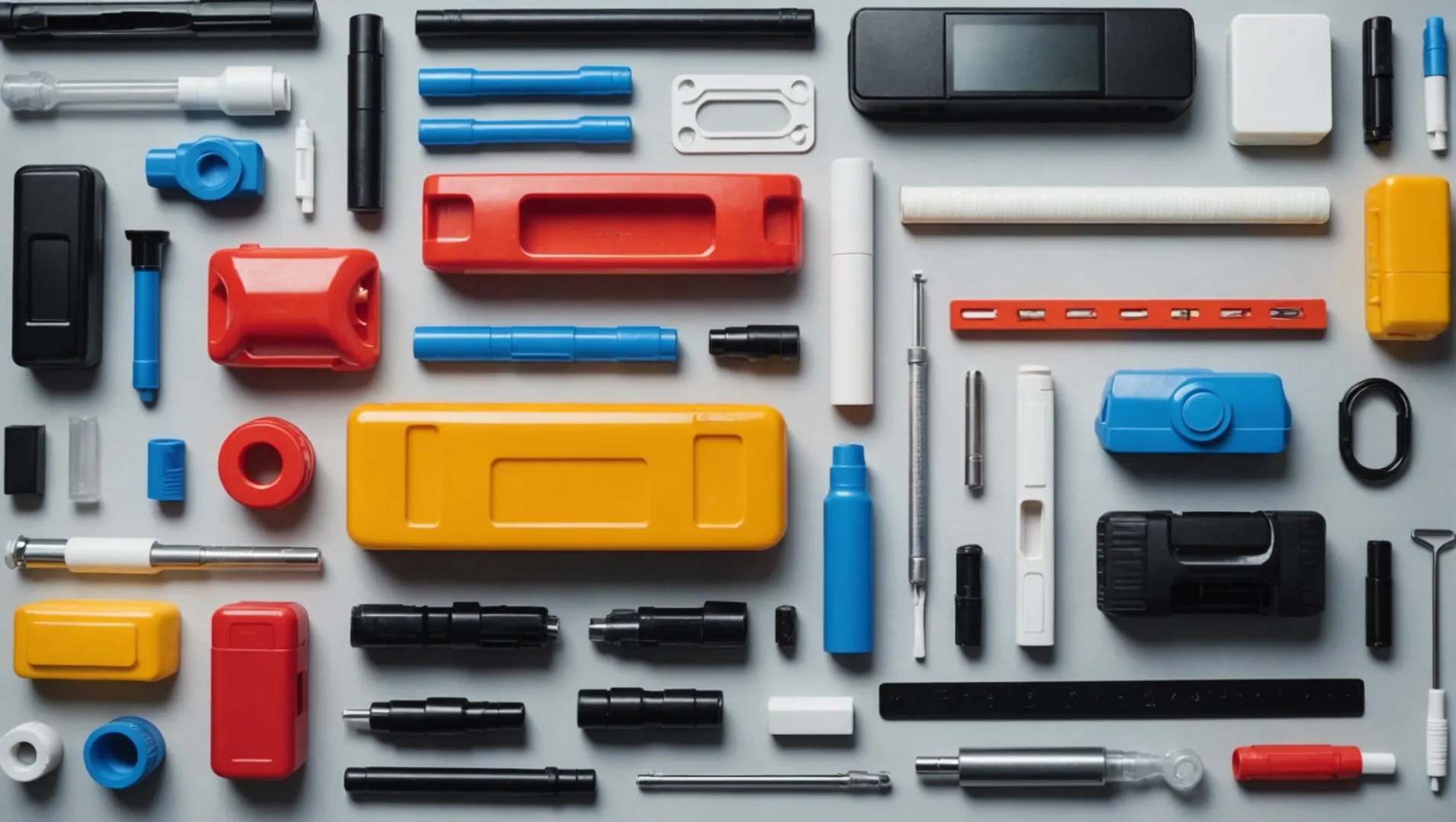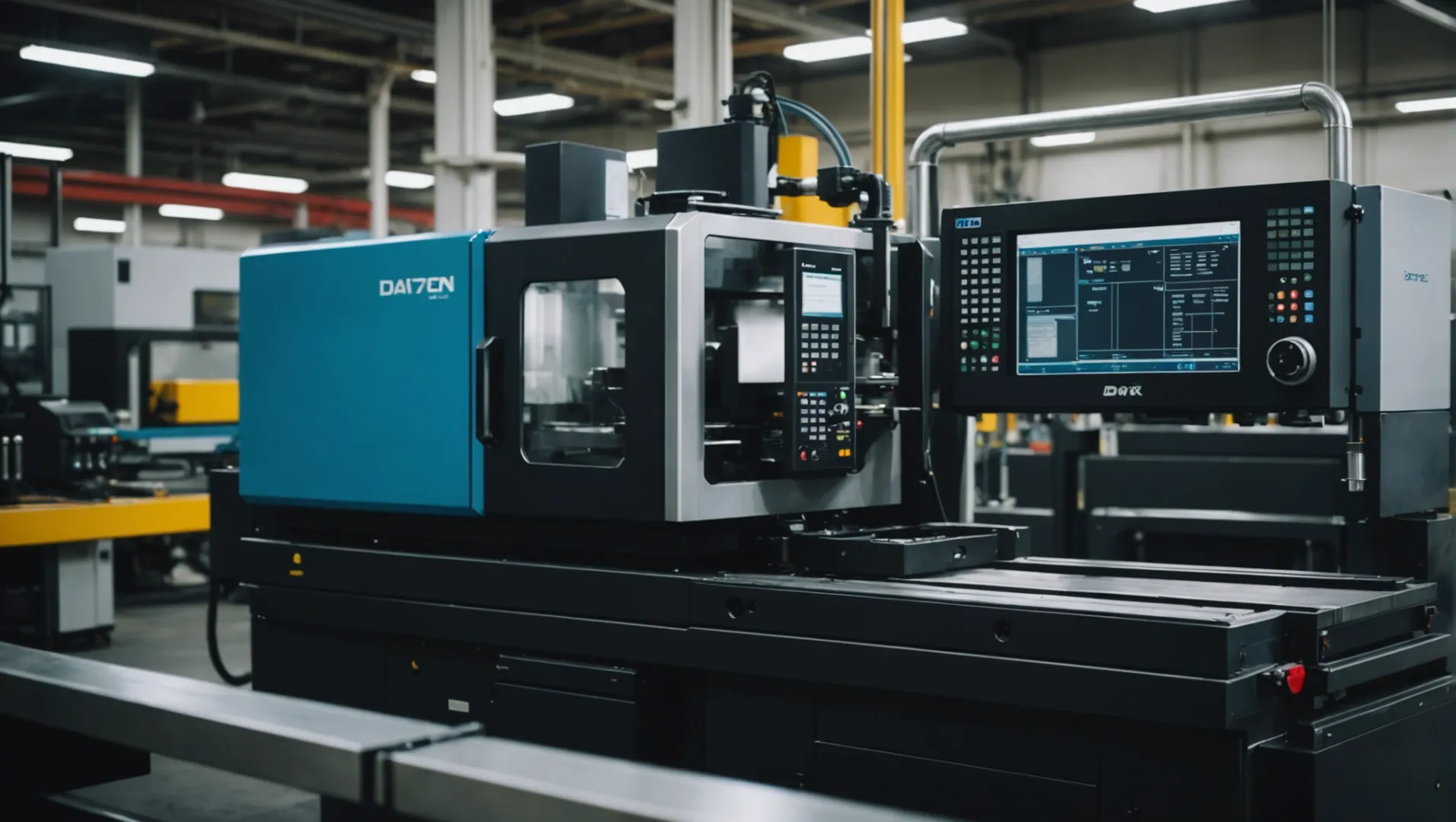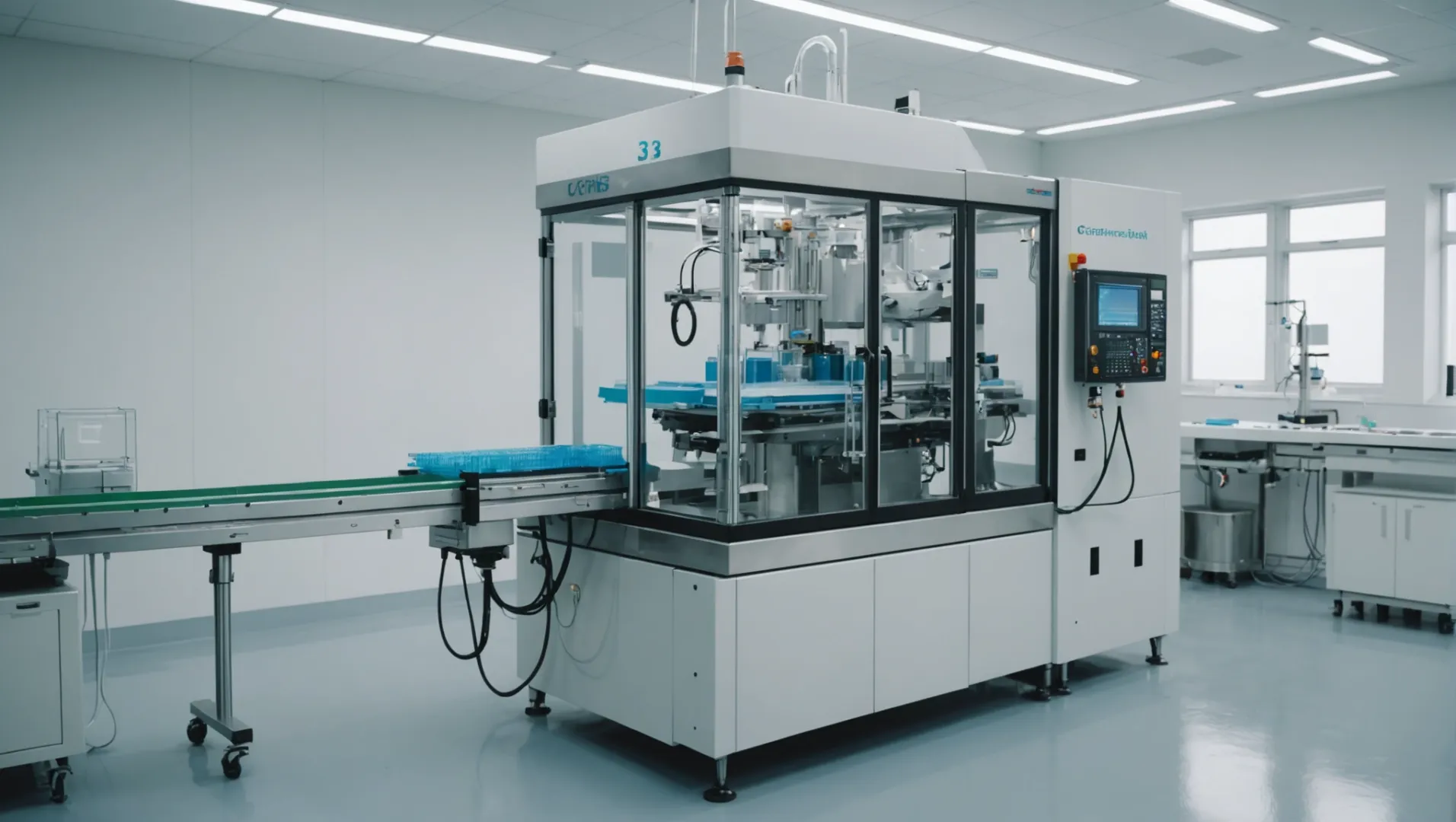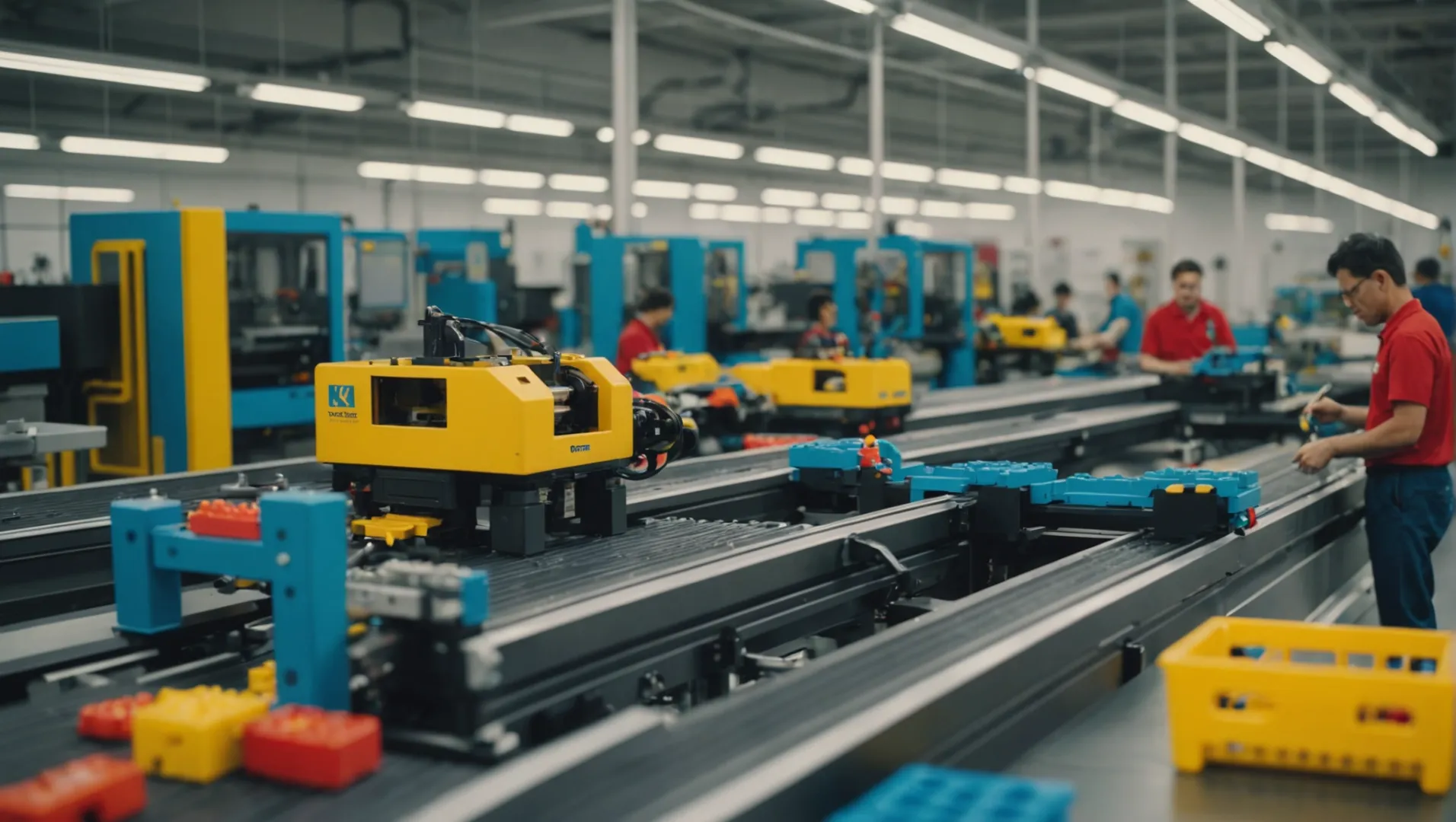
Injection molding is not just a manufacturing process; it’s a lifeline for countless industries. Let me take you on a journey through its impactful applications that touch our daily lives.
Injection molding is used extensively in manufacturing due to its ability to produce high-precision, durable parts efficiently. Its applications range from daily household items to complex automotive and medical components.
While understanding the immediate uses of injection molding is crucial, exploring its diverse applications across various sectors can provide deeper insights into its role in innovation and industry growth. Let’s delve into the specifics.
Injection molding is crucial for medical devices.True
Injection molding ensures high precision and hygiene in medical device production.
How Does Injection Molding Benefit the Automotive Industry?
In the automotive sector, injection molding is crucial for producing high-quality, durable parts swiftly and cost-effectively.
Injection molding benefits the automotive industry by enabling the mass production of lightweight, durable, and complex components that meet rigorous safety and performance standards.

Interior Components
One of the most significant advantages of injection molding1 in the automotive industry is its ability to produce interior components with precise details. Parts such as dashboards, center consoles, and door panels are often made using this process. These components not only enhance the aesthetic appeal of vehicles but also meet stringent industry standards for durability and resistance to temperature fluctuations.
For instance, dashboards manufactured through injection molding are designed to withstand extreme temperatures while maintaining their shape and finish. Additionally, the ability to integrate complex designs, such as textured surfaces or custom color schemes, offers manufacturers and designers unparalleled flexibility.
Exterior Components
The manufacturing of exterior parts like bumpers and headlight housings also heavily relies on injection molding. These components require robust materials capable of withstanding impacts while also being lightweight enough to maintain fuel efficiency standards. Injection molding allows for the production of parts that meet these criteria without compromising on design integrity.
For example, bumpers created through this process are engineered to absorb energy during a collision, thus protecting the vehicle’s frame. The high precision of injection molding ensures that each part meets strict specifications, contributing to vehicle safety and performance.
Cost Efficiency and Material Utilization
Injection molding is highly efficient in terms of material usage and production time. The process minimizes waste by using only the exact amount of material needed for each component, thus reducing costs and environmental impact. The rapid production cycles inherent to injection molding mean that large quantities of parts can be produced in a short timeframe, which is essential in the fast-paced automotive industry.
Moreover, the use of advanced polymers and composites in injection molding allows for the creation of parts that are not only lighter but also stronger than traditional materials. This advancement supports automotive manufacturers in their pursuit of producing more environmentally friendly vehicles by improving fuel efficiency.
| Component Type | Benefits | Examples |
|---|---|---|
| Interior Components | Durability, Aesthetics, Temperature Resistance | Dashboards, Door Panels |
| Exterior Components | Impact Resistance, Lightweight, Design Flexibility | Bumpers, Headlight Housings |
| General Benefits | Cost Efficiency, Material Optimization | Wide Range of Parts |
By leveraging these capabilities, automotive manufacturers continue to innovate and enhance vehicle designs while adhering to safety standards and sustainability goals.
Injection molding reduces production costs in automotive.True
Injection molding minimizes waste and uses precise material amounts.
Injection molding cannot produce complex automotive parts.False
It excels in creating intricate designs with high precision.
What Role Does Injection Molding Play in Medical Device Production?
Injection molding is pivotal in producing medical devices, ensuring precision and hygiene. Let’s explore its impact in this critical field.
Injection molding plays a crucial role in medical device production by providing high precision, scalability, and adherence to strict hygiene standards. It enables the creation of complex medical components and consumables efficiently, supporting the healthcare industry’s demand for reliable and cost-effective solutions.

Precision and Hygiene in Medical Devices
Injection molding is paramount in producing medical devices2 such as syringes, infusion sets, and medicine bottles. The process allows for high precision, which is crucial for ensuring that these devices meet stringent safety and hygiene standards.
- Precision: Critical in creating devices that require exact specifications to function safely and effectively.
- Hygiene: Ensures products are manufactured in a controlled environment to prevent contamination, essential for medical applications.
Mass Production with Scalability
One of the significant advantages of injection molding in the medical field is its scalability. This manufacturing method can produce large volumes of medical components swiftly without compromising on quality. For instance:
| Product | Characteristics | Production Volume |
|---|---|---|
| Syringes | High precision | High |
| Infusion Sets | Consistent quality | Medium |
| Medicine Bottles | Durable and sterile | Low to Medium |
The ability to scale production efficiently meets the growing demand for medical devices worldwide.
Versatility in Materials and Design
The versatility of injection molding extends to the variety of materials that can be used. Medical devices often require specific material properties like biocompatibility and chemical resistance, which injection molding can accommodate. Additionally, the design flexibility offered by this process allows for innovation in creating custom medical solutions that cater to unique needs.
- Material Flexibility: Suitable for materials that must withstand sterilization processes.
- Design Innovation: Enables the creation of complex shapes and features integral to modern medical devices.
Economical Advantages
Finally, injection molding offers cost-effective solutions for producing medical devices. The process reduces waste by efficiently using materials, which is economically beneficial when dealing with expensive medical-grade polymers. Additionally, the automation involved in injection molding minimizes labor costs while ensuring consistent quality across batches.
By leveraging these aspects, injection molding remains a foundational technique in the production of reliable, high-quality medical devices.
Injection molding ensures high hygiene in medical devices.True
Injection molding is performed in controlled environments, preventing contamination.
Injection molding limits scalability in medical device production.False
It allows for mass production, meeting high demand efficiently.
Why Is Injection Molding Preferred for Electronic Product Components?
Injection molding stands out as the go-to technique for crafting electronic components due to its precision, scalability, and versatility.
Injection molding is favored in electronics for creating intricate, high-precision components like housings and connectors. Its ability to produce consistent, detailed parts efficiently makes it ideal for mass production in the tech industry.

Precision in Design and Manufacturing
One of the main reasons injection molding is crucial3 for electronic components is its ability to produce parts with intricate geometries and high dimensional accuracy. This precision is particularly vital for products such as smartphone casings and laptop shells, where any deviation can impact the product’s functionality and aesthetics.
For instance, the complex curves and thin walls of a smartphone case require a manufacturing process that can achieve tight tolerances and fine details. Injection molding delivers this precision by using high-quality molds and advanced machinery, ensuring that each part meets stringent specifications.
Efficiency and Cost-Effectiveness
The efficiency of injection molding4 lies in its ability to produce large volumes of parts quickly and consistently. This method significantly reduces production costs by minimizing material waste and decreasing labor expenses, making it an attractive option for manufacturers.
In the electronics industry, where rapid innovation demands quick turnaround times, injection molding provides a competitive edge. By allowing manufacturers to swiftly adapt to new designs or changes in product demand, this process keeps production lines moving without sacrificing quality.
| Benefit | Description |
|---|---|
| High Precision | Ensures detailed, accurate parts essential for electronics |
| Scalability | Facilitates mass production without compromising on quality |
| Cost Efficiency | Reduces waste and labor costs while speeding up production |
Versatility in Material Use
Injection molding supports a wide range of materials, including various thermoplastics that offer different properties suitable for electronic applications. For example, materials like polycarbonate or ABS can provide impact resistance, thermal stability, and electrical insulation—all crucial attributes for components such as circuit boards or protective casings.
Moreover, the versatility extends to surface finishes. Manufacturers can achieve various textures and coatings during the molding process, enhancing both the functional and aesthetic qualities of electronic products.
Customization and Innovation
The adaptability of injection molding allows designers to experiment with novel shapes and functions. As technology advances, so does the complexity of electronic components. Injection molding facilitates this innovation by accommodating new material blends and complex designs that might be challenging for other manufacturing methods.
In summary, injection molding’s role in electronics5 is indispensable due to its ability to combine efficiency, precision, versatility, and innovation. It continues to evolve alongside technological advancements, cementing its status as the preferred method for producing electronic components.
Injection molding offers high precision for electronic components.True
It achieves intricate geometries with high dimensional accuracy.
Injection molding is inefficient for large-scale electronic production.False
It efficiently produces large volumes, reducing costs and waste.
How Has Injection Molding Revolutionized Toy Manufacturing?
From simple building blocks to intricate models, injection molding has transformed toy production, enabling creativity and efficiency like never before.
Injection molding has revolutionized toy manufacturing by enabling mass production of complex, colorful, and precise plastic toys efficiently and cost-effectively.

The Transformation of Toy Production
Injection molding’s impact on the toy industry is profound. By allowing the mass production of toys with complex shapes and vibrant colors, it has enabled manufacturers to meet the diverse preferences of consumers worldwide. This efficiency is not just limited to production speed but also extends to the precision and quality of the toys produced.
Consider the iconic LEGO bricks6, which are a testament to the precision and consistency that injection molding can achieve. Every brick must fit perfectly with another, a feat accomplished through this advanced manufacturing process.
Advantages of Injection Molding in Toy Manufacturing
-
Precision and Detail: Injection molding allows for intricate designs and precise dimensions, which are crucial for toys like puzzles and construction sets.
-
Material Versatility: The ability to use various plastics gives manufacturers the flexibility to create toys that are not only fun but also safe for children.
-
Cost-Effectiveness: Once the mold is created, producing large quantities of toys becomes significantly cheaper, making it easier for companies to offer affordable products to consumers.
-
Customization: Injection molding allows for customization of toys, offering options in terms of color and features without substantial increases in production costs.
Innovation and Creativity Enabled by Injection Molding
The process fosters innovation by allowing designers to experiment with new shapes and functionalities. For instance, educational toys such as Rubik’s Cubes7 benefit from the precision of injection molding, which ensures smooth operation and durability.
The ability to rapidly produce prototypes also accelerates the design process, helping toy companies stay ahead in a competitive market by quickly bringing new ideas to life.
Environmental Considerations
Modern injection molding practices have also begun to address environmental concerns. Techniques such as using recycled materials and improving energy efficiency during production are becoming more prevalent, aligning the toy industry with global sustainability goals.
These advancements not only help reduce waste but also ensure that the toys produced are environmentally friendly, meeting the demands of increasingly eco-conscious consumers.
Injection molding allows LEGO bricks to fit perfectly.True
Injection molding ensures precise dimensions, crucial for LEGO's perfect fit.
Injection molding increases toy production costs significantly.False
Once molds are made, injection molding reduces costs by mass-producing toys.
Conclusion
Injection molding’s versatility across industries showcases its critical role in efficient production. As technology advances, its applications are expected to expand further, revolutionizing product design and manufacturing processes.
-
Discover how injection molding enhances automotive manufacturing efficiency.: Injection molding offers high-quality plastic parts with great surface finish qualities. Manufacturers can choose from a variety of designs — even complicated … ↩
-
Explore how injection molding supports diverse medical applications.: The plastic injection molding of medical parts has played a crucial role in creating essential components to help the medical field stay safe … ↩
-
Explore how precision injection molding achieves high accuracy in electronics.: Electronics injection molding involves converting raw plastic material – in pellet or granular form – into molded electronic parts. ↩
-
Learn about the efficiency benefits of injection molding for electronics.: Injection molding is crucial for high-volume production and consistent quality. With this process, you can create thousands of parts quickly, … ↩
-
Understand how injection molding supports innovation in electronics.: We’ve been a trusted partner to the electronics industry for over 60 years using injection molding techniques to create complex shapes and geometries. ↩
-
Discover how LEGO achieves precise dimensions using injection molding.: The plastic mold injector, designed to rapidly and precisely create dozens of identical toy parts and pieces, allowed Christiansen to generate … ↩
-
Learn how injection molding ensures Rubik’s Cubes’ precision and durability.: The primary method for the manufacturing of the pieces of a Rubik’s cube is through injection molding (“Rubik’s Cube”, 2018). ↩






